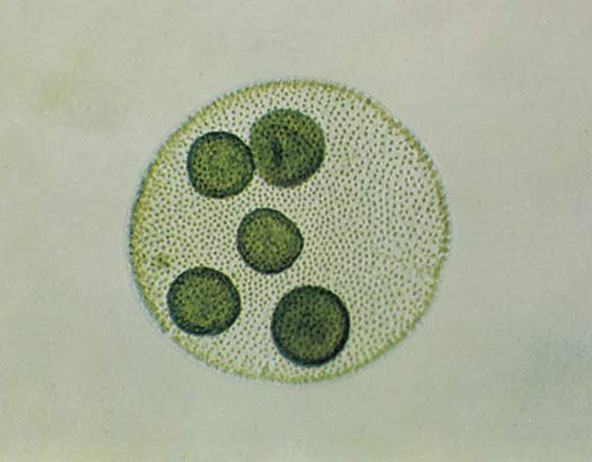
Similarities and differences among algal, fungal, and protozoan groups have led scientists to propose major taxonomic changes, and those changes are continuing. Molecular studies, especially comparative gene sequencing, have supported some of the changes that followed electron microscopic studies, but they have suggested additional changes as well. Furthermore, the apparent evolutionary scatter of some algae among protozoan and fungal groups implies that a natural classification of algae as a class is impracticable.
Kingdoms are the most encompassing of the taxonomic groups, and scientists are actively debating which organisms belong in which kingdoms. Some scientists have suggested as many as 30 or more kingdoms, while others have argued that all eukaryotes should be combined into one large kingdom. Using cladistic analysis (a method for determining evolutionary relationships), the green algae should be grouped with the land plants, the chromophyte algae should be grouped with the aquatic fungi and certain protozoa, and the Euglenophyceae are most closely related to the trypanosome flagellates, including the protozoa that cause sleeping sickness. However, it is unclear where the red algae or cryptomonads belong, and the overall conclusion is that the algae are not all closely related, and they do not form a single evolutionary lineage devoid of other organisms.
Division-level classification, as with kingdom-level classification, is tenuous for algae. For example, some phycologists place the classes Bacillariophyceae, Phaeophyceae, and Xanthophyceae in the division Chromophyta, whereas others place each class in separate divisions: Bacillariophyta, Phaeophyta, and Xanthophyta. Yet, almost all phycologists agree on the definition of the respective classes Bacillariophyceae, Phaeophyceae, and Xanthophyceae. In another example, the number of classes of green algae (Chlorophyta), and the algae placed in those classes, has varied greatly since 1960.
The five classes of green algae given below are accepted by a large number of phycologists, but at least an equal number of phycologists would suggest one of many alternative classification schemes. The classes are distinguished by the structure of flagellate cells (e.g., scales, angle of flagellar insertion, microtubular roots, and striated roots), the nuclear division process (mitosis), the cytoplasmic division process (cytokinesis), and the cell covering. Many scientists combine the Micromonadophyceae with the Pleurastrophyceae, naming the combined group the Prasinophyceae.
Because classes are better defined and more accepted than divisions, taxonomic discussions of algae are usually constrained at the class level. The divisions provided below, though commonly used, are by no means accepted by all phycologists.
“Phylum” and “division” represent the same level of organization; the former is the zoological term, the latter is the botanical term. The classification of protists continues to be debated, and a standard outline of the kingdom Protista has not been established. The differences between the classification presented below and the classification presented in the article on protists reflect the taxonomic variations that arise from individual interpretations.
We have this as marine ingredient available on https://seatechbioproducts.com/marine-algae-micro-and-macro-seaweeds
Souce: https://www.britannica.com/science/algae/Classification-of-algae